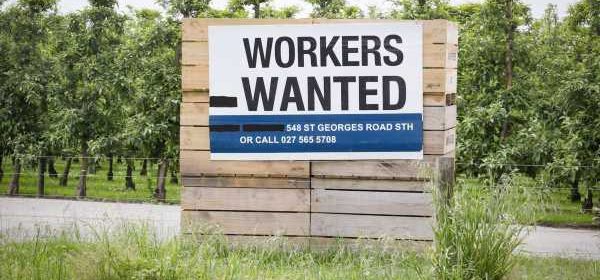Liam Dann: The next massive economic experiment – opening our borders

OPINION:
The closure of our borders has been a massive economic experiment.
Opening them will be too.
And the political debate is going to get more heated as pandemic constraints ease.
Last week, the Productivity Commission said the Government should undertake a major review of migration policy to ensure New Zealand employers have access to skilled workers while reducing the inflow of low-skilled and temporary migrant workers.
It was a timely call.
Almost everyone agrees with the first bit. But the second part has business groups worried.
It look increasingly like they are on a collision course with the Government over access to cheap imported labour.
For the decade prior to the pandemic, record population growth was one of the biggest drivers for the economy.
Population growth, or lack of it, is key factor in everything from the housing market to the labour market.
Now it is one of the biggest variables for economists trying imagine how our economy might perform over the next few years.
Even forecasting the economic impact of the Aussie bubble is extremely difficult.
There has been talk of Australian visitors creating $1 billion in value for tourism sector over the rest of the year.
But that doesn’t reflect the net result for the wider the economy – i.e. factoring how much Kiwis might spend going to Australia.
Most economists have scratched their heads and assumed it will be a net positive for the country, but only at the margins.
Then there are longer-term issues that the transtasman border could create.
Will Aussie demand for our builders and tradies be a drain on our capacity to build more houses?
If Australia does prove enticing for large numbers of Kiwi workers then maybe we don’t need all the houses.
It all gets very complicated and very speculative very fast.
Since the start of the pandemic, net migration numbers have been very weird.
There was a massive influx of returning Kiwis as the pandemic started.
That pushed the annual net migration gain to staggering 85,000 in the year to February 2020.
But that has collapsed as quarantine restrictions capped entries.
Currently, net migration is running between 600 and 700 per month.
As borders open and the quarantine restraints ease, will pent-up demand drive another influx of Kiwis?
Or, as life in the UK and other Covid-ravaged countries returns to normal, will many recent arrivals head back?
We have no control over the movement of Kiwis but when it comes to our growing capacity to accept new immigrants we face big choices – and a doozy of a debate.
The issue has already been running hot in sectors like horticulture, where fruit growers have faced acute labour shortages.
There’s also been grumbles from hospitality – where they are short on specialist chefs – and other sectors where very specific skills are required.
Last week we heard one of New Zealand’s most successful video-gaming producers – Dean Hall of RocketWerkz – questioning why his rapidly growing industry isn’t getting equal treatment with film when it comes to allowing workers in.
He seemed to make a good point and the Government seemed to listen.
The relatively open response from Economic Development Minister Stuart Nash was in marked contrast to the Government’s stance with lower-skilled industry sectors.
I suspect government thinking is very much in line with the Productivity Commission with regards to reducing the inflow of low-skilled workers.
Labour wants to see wages rise to levels that will attract more local workers to these jobs.
It seems to be happy to let supply side pressures drive that even if that means some short-term pain in some sectors.
It also believes we can train more New Zealanders into skilled and semi-skilled jobs that have been done by foreign workers.
Business groups are sceptical and argue that doesn’t resolve the short-term labour shortages that are limiting growth now.
But I think the Government is set to play it tough for a while yet.
They have the Productivity Commission on their side and probably a lot of popular support.
Immigration is always a political hot potato.
Winston Peters and NZ First leaned on it for years. Perhaps, when Covid removed it as an election issue last year, it sealed his fate.
I hope ultimately there is a degree of bipartisan consensus that means we avoid extreme views on either side of the debate.
It can get ugly when it moves from the economic to the cultural.
It’s a cliche to point out that all of New Zealand’s people migrated here at some point.
And it doesn’t resolve a debate about whether more arrivals are beneficial to those already here.
But the demographics show we need immigration.
Based on birth rate alone, New Zealand is on its way to a declining population.
New Zealand’s total fertility rate in 2020 was down to 1.61 births per woman, its lowest recorded level, and well below the population replacement rate of 2.1 which Stats NZ reported in February.
Without immigration, New Zealand would stagnate. Not just economically but socially and culturally.
Life is too short and the world is to interesting to entertain the idea of being closed to it for any length of time.
But the pace and scale of immigration, and who we should be targeting, is a different debate.
It’s not an easy one but it’s one we now have to take a deep breath and dive into.
Source: Read Full Article

/cloudfront-ap-southeast-2.images.arcpublishing.com/nzme/4JMGFHN4SC6VPDAG26XSB4TA2A.jpg)